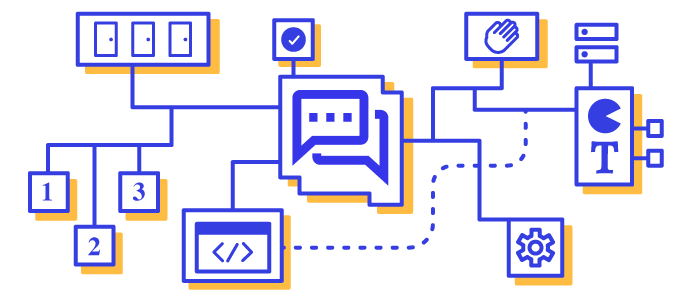Ephemeral Environments Across Your Team

From enabling a sales engineer to demo a new feature to helping a product person give feedback, ephemeral environments allow your teams to collaborate across your application lifecycle. Since ephemeral environments are lightweight and easily shareable, they simplify many of the barriers that plague cross-team communications, resulting in a faster, smoother workflow.
Developers Working With Developers
During the code review process, developers will look at peers' code and test any new features. To do this, they need to tear down their local environments in order to build another developer’s environment. However, with ephemeral environments:
- when a developer needs feedback on a WIP, they can share a remote link to fellow coworkers
- developers can get feedback on any given feature branch
- nobody has to wait on builds or blocks
- developers don’t have to destroy their local setup and interfere with their workflow
- code review is now possible in an asynchronous manner
Developers Working With Product Team
After developers create a new feature, they’ll want to run it past someone on the product team, as they often need feedback and may have additional questions. However, when working on an assigned ticket, developers may also require someone on the Product team to review the WIP feature. With ephemeral environments:
- developers don’t need to set up screenshares or meetings
- developers can send the Product person a direct link to the WIP environment
- Product can provide relevant, full-scope feedback at their own convenience
- developers and QA can collaborate asynchronously and independently
QA Working With Developers
QA teams review features before they reach production and communicate the results of their assessments back to the developers. Ephemeral environments provide a tighter feedback loop. For example:
- QA can immediately interact with a new feature after it passes a code review
- QA finds problems and bugs early on, prior to a merge, so developers can quickly address
- QA makes sure no regressions get introduced by a new feature
- nobody is blocked by waiting for a single staging environment to free up
- we can employ multiple environments and parallelize QA’s ability to assess multiple features at once
Sales Working With Developers
Sales teams will need to demo features to potential customers. However, they may run into blocks if a demo environment is in use or in a state of repair. Additionally, a customer may request to see a new feature in action, but the team may not have a steady way to host it. Ephemeral environments help by:
- allowing each sales engineer as many demo environments as they need
- reducing blocks from waiting for other demo environments to free up
- giving sales engineers a way to share beta features with potential customers

